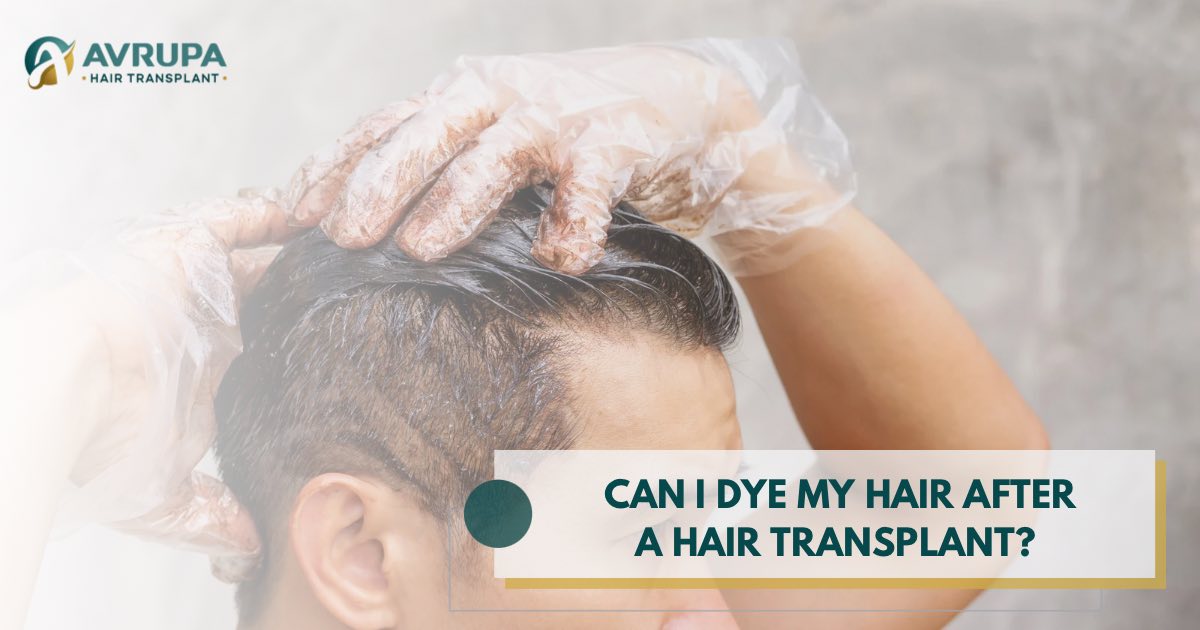How Does Hair Dye Affect Transplanted Hair?
Hair dye contains chemicals, including ammonia and hydrogen peroxide, that alter the hair’s color by opening the hair cuticle and changing the pigment. For individuals with a hair transplant, these chemicals can potentially irritate a sensitive scalp, especially during the initial recovery period. This is why timing and product choice are essential when dyeing transplanted hair to prevent irritation and ensure optimal results.
- Chemical Impact: Ammonia and hydrogen peroxide can irritate the scalp.
- Timing is Crucial: Applying dye too early can affect healing.
- Product Choice Matters: Opt for gentle dyes to minimize irritation.
When Can I Dye My Hair After a Hair Transplant?
After a hair transplant, it’s crucial to allow ample time for the scalp and hair follicles to recover. Most hair transplant specialists recommend waiting at least 4-6 weeks before dyeing your hair, but this timeline can vary based on individual healing rates. Here’s a general guide:
- Initial Recovery Period (0-2 Weeks):
- Description: The scalp is in its most vulnerable state.
- Recommendation: Avoid applying any products other than those recommended by your surgeon.
- Scab Formation and Shedding Phase (2-4 Weeks):
- Description: Scabs may begin to form and shed as hair follicles establish themselves.
- Recommendation: Continue gentle washing; avoid dyeing your hair.
- Safe Period for Dyeing (4-6 Weeks and Beyond):
- Description: The transplanted area is usually healed.
- Recommendation: Confirm with your surgeon before dyeing. Use gentle dyes or consult a professional stylist experienced with post-transplant hair.
What Type of Hair Dye is Best After a Hair Transplant?
Choosing the right type of dye is crucial to avoid irritation and maintain hair health. Here are some recommended types:
- Semi-Permanent Dyes:
- Benefits: They do not contain ammonia or peroxide, making them gentler on the hair and scalp.
- Usage: Coat the hair without penetrating deeply to reduce irritation risk.
- Natural and Organic Dyes:
- Benefits: Plant-based dyes, such as henna, are less likely to irritate the scalp.
- Usage: Always check the ingredient list to avoid hidden chemicals.
- Professional-Grade Dyes:
- Benefits: Stylists can use products designed for sensitive or healing scalps.
- Usage: A Professional application ensures careful handling around the transplant area.
- Avoid Bleach:
- Reason: Bleaching is highly damaging and can dry out the scalp.
- Recommendation: Avoid using bleach for at least six months after transplant.
Bullet Points for Easy Reference:
- Use semi-permanent or natural dyes.
- Consult a professional stylist.
- Avoid bleaching for extended periods.
What are the Risks of Dyeing Hair Too Soon?
Dyeing your hair before the recommended recovery period can pose risks to both your scalp and new hair follicles:
- Scalp Irritation: Redness, itching, and discomfort.
- Infection Risk: Introduction of bacteria to transplant sites.
- Weakening New Hair Follicles: Hair thinning or shedding.
- Impact on Healing Process: Delayed recovery and compromised transplant success.
How to Care for Transplanted Hair Before and After Dyeing
Proper care for transplanted hair is essential both during the recovery period and once you start dyeing your hair again. Here are some tips to ensure the best outcomes:
- Follow Post-Transplant Care Instructions: Adhere strictly to the guidelines provided by your surgeon.
- Use Sulfate-Free Shampoo: gentle cleansing that won’t strip natural oils.
- Moisturize the Scalp: Apply a mild, dermatologist-recommended moisturizer.
- Limit Heat Styling: Excessive heat can dry out and damage your hair.
- Test a Small Patch First: Conduct a patch test to check for sensitivity before applying the complete product.
When to Consult Your Surgeon About Dyeing Hair
It’s always best to consult with your hair transplant surgeon before dyeing your hair, especially if you have concerns about sensitivity or have experienced any unusual healing patterns. Surgeons can provide personalized advice and may suggest waiting longer if your scalp shows signs of slower recovery.
Action Steps:
- Schedule a Follow-Up Appointment: Discuss when it’s safe to dye your hair.
- Share Any Concerns: Address potential issues proactively.
- Get Professional Recommendations: Tailored advice based on your healing progress.
Frequently Asked Questions
Can I bleach my hair after a hair transplant?
Bleaching is typically not recommended right after a transplant due to its harsh nature. Bleaching involves stripping the hair of its natural pigments and can be very drying, especially on newly transplanted hair. Waiting until your scalp and follicles are robust enough to handle this process is recommended—often several months post-transplant.
Will dyeing damage my new hair?
Not if done carefully after the scalp has fully healed. Using gentle, high-quality dyes and adhering to the recommended wait time can help preserve the health of transplanted hair. Avoiding frequent dyeing also minimizes the risk of weakening your hair.
What if I see redness or swelling after dyeing?
If you experience any irritation after dyeing, rinse your scalp immediately with water and apply a mild, soothing scalp treatment, as recommended by your doctor. Contact your hair transplant specialist if the irritation persists or worsens.
Does hair dye affect the growth of transplanted hair?
Dyeing your hair should not impact the growth of transplanted hair, provided you wait until the scalp has completely healed and use appropriate products. By the time transplanted hair is ready to be dyed, the hair follicles should be securely in place, and regular hair dye should not interfere with growth.
Conclusion
Dyeing your hair after a hair transplant is possible and safe, provided it is done at the right time. By waiting until at least 4-6 weeks post-surgery, choosing gentle or professional-grade products, and following your surgeon’s advice, you can dye your hair with minimal risk. Remember, taking the right precautions and providing gentle care for your transplanted hair will enhance both the longevity and health of your new look.
